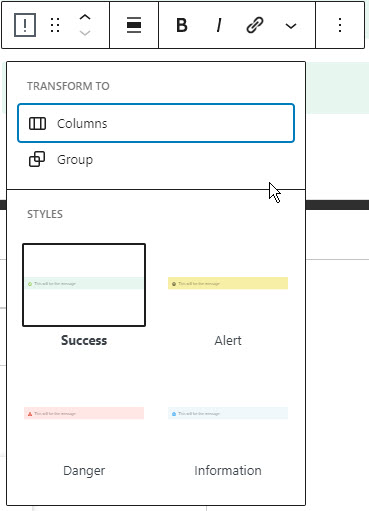WARNING: unbalanced footnote start tag short code found.
If this warning is irrelevant, please disable the syntax validation feature in the dashboard under General settings > Footnote start and end short codes > Check for balanced shortcodes.
Unbalanced start tag short code found before:
“brackets, you’ll add the information that you want to be included in the footnote. Once published, the footnote will automatically be rendered in sequential order as super scripts, and then displayed at the end of the article. Identical footnotes are combined. Writing Examples R…”
The Easton Park Wiki uses WordPress’s built-in Gutenberg editor which is a “what you see is what you get editor” (WYSIWYG). It allows for easy content creation through the use of blocks. Below are some of the common blocks and features that you may encounter when editing articles.
Learning the Gutenberg block system
At the WordPress Gutenberg page, you can test many of the blocks that are available. You may also watch the Tutorial from Tuts+ YouTube channel below. This video is a little outdated, but still containers the majority of the block concepts.
Paragraphs
Any time you hit enter or start a new block, it will default to a paragraph. Technically, every block is considered a paragraph.
As you type, you can utilize many of the common keyboard shortcuts you may be familiar with from other word processing software. You can see a list of all keyboard shortcuts on WordPress’s website.
Also, as you type, you can hover your mouse over the current paragraph to see common formatting options.
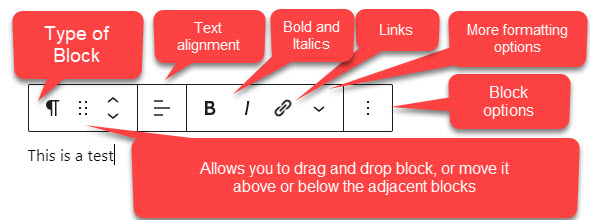
Links
Adding links is easy. You can click on the link icon and then add the link. Another quick option is to type ctrl+k
. This will bring up the link editing options where you can past the URL.
If you are looking to link to an internal page on the Wiki, you can search for the page, and it will automatically link to that page.
If the link is an external link, it is recommended to select the “Open in new tab” option. This will create a new tab once a person clicks on the link. Even if this is not selected, external links will automatically open in a new tab.
It is not required to select the nofollow or sponsored options. These are advanced options to tell search engines to the relationship between the Easton Park Wiki and the external website. Wiki administrators will make this determination in the future.

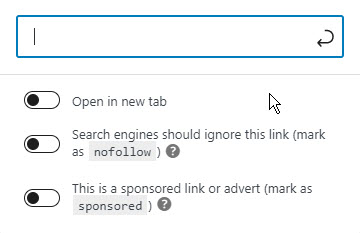
Images
Contributors are welcome to upload images to articles. Please be sure to select images that you have copyright to, or are in the public domain.
To add an image, you choose the image block. You can then upload an image directly from your computer, browse the Wiki’s medial library, or link to an image from a URL.
You can also drag and drop an image directly from your computer’s file manager to the image block. Even better, you can drag and drop an image directly from your file manage directly to the editing page and it will automatically create an image block.
If you drag and drop multiple images at the same into the article, it will automatically create a gallery.
When adding images, you have the option to also include a caption that appear below the image. This is recommended.


Galleries
You can upload many images together and organize them into a gallery. This is perfect for images that share a similar concept.
Similarly to the Images block, you can upload multiple images at the same time, either using the “upload” button, or by dragging and drooping them into the gallery block. Once uploaded, you can order the images as you wish, edit or replace individual images.
On the right-hand block settings, you can choose the amount of columns appear in the gallery, whether to crop the images, if you want the images linked to the individual images or not
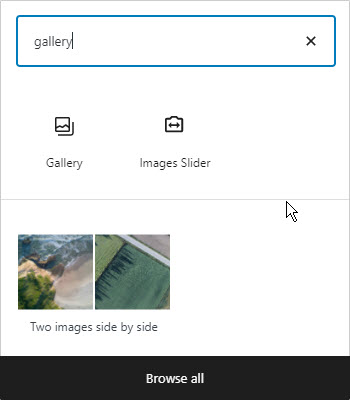
Headings
Headings are used to help provide structure to the article. Headings automatically have anchored identification for users to quickly share a specific heading with others.
All headings are automatically added to the Article Contents block that appears on the right-hand side of every article.
The WordPress editor allows for headings 1-6. By default, the article’s title is Heading 1. Please start all headings with 2 or lower. Below is an example of how all the headings will look once rendered:
Heading 2
Heading 3
Heading 4
Heading 5
Heading 6
Adding a heading is easy.

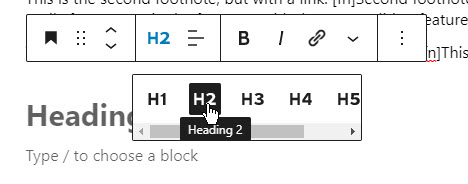
Lists
The use of lists are encouraged. Both bulleted lists and ordered lists are available.
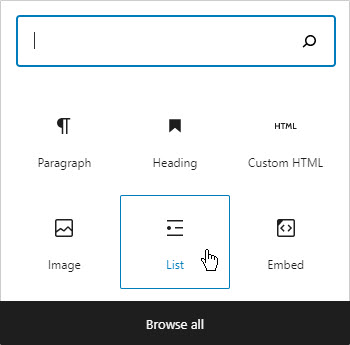
Footnotes
This is not a default feature in Gutenberg, and is a third-party plugin.
To add a footnote when editing an article, you simply need to add the footnote shortcode: [fn] [/fn]
Between the two [fn] brackets, you’ll add the information that you want to be included in the footnote. Once published, the footnote will automatically be rendered in sequential order as super scripts, and then displayed at the end of the article.
Identical footnotes are combined.
Writing Examples

Rendered Examples

Informational Blocks
One of this website’s software partners provided a block called “Heroic Blocks – Messages”. This allows you to create blocks that provide informational messages or warnings. There are four options available. Please choose the option that is most appropriate to the message you are attempting to convey.

